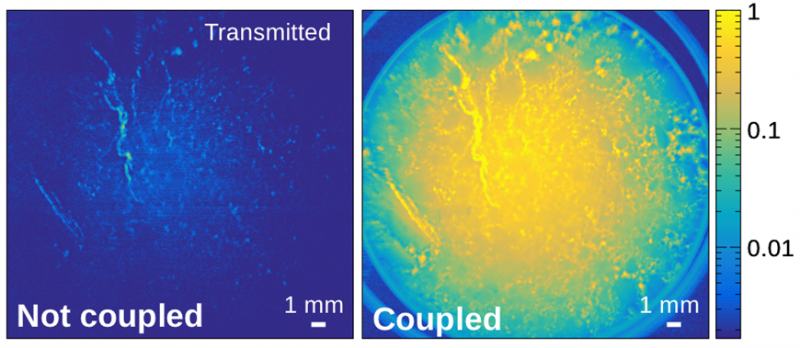Researcher looking to shed light deeper into the human brain

The inner workings of the human brain have always been a subject of great interest. Unfortunately, it is fairly difficult to view brain structures or intricate tissues due to the fact that the skull is not transparent by design. The reality is that light scattering is the major obstacle for deep penetration into tissue.
Dr. Vladislav Yakovlev, professor in the Department of Biomedical Engineering at Texas A&M University, has been developing a more efficient way of propagating light through an opaque medium. Propagation of light refers to the way that light travels from one point to another, in this case, through a medium, such as human tissue.
The new method involves making a minimally invasive hole within the medium, which is smaller in diameter than needles that are currently being used within the medical field. The process shows a great deal of promise in many uses, including viewing brain structure through the skull and imaging blood through skin tissue.
The technology could even be extended outside the realm of biomedical engineering to develop a more efficient way of seeing through fog while driving. This can be accomplished by deploying a laser pulse that could be sent through fog and evaporate water. This would allow drivers to have a safer experience during hazardous driving conditions and would work exactly as the method used in biomedical engineering applications.
The holes used to pass the light through are a few hundred micrometers in depth and a width of 20 to 30 microns. A micron is one millionth of a meter, and by comparison a single strand of human hair is about 75 microns in diameter. The light is then coupled into the opaque material resulting in an increase of magnitude of optical transmission into the material. The material that light is passed through is also referred to as the scattering medium.
The report documenting the work of Yakovlev was recently published in Proceedings of the National Academy of Sciences of the United States of America and definitively demonstrated that light injected into the scattering medium will remain there for an extended period of time. The amount of time that the photons remained was increased by a factor of 100.
One of the challenges facing researchers is that of optical absorption within tissues. However, because the new method is wavelength independent, the wavelength can be specified to perform measurements in a specific part of the light spectrum. This approach has the potential to yield analytical information about the composition and structure of the medium or tissue.
More information: Jonathan V. Thompson et al. Enhanced coupling of light into a turbid medium through microscopic interface engineering, Proceedings of the National Academy of Sciences (2017). DOI: 10.1073/pnas.1705612114
Journal information: Proceedings of the National Academy of Sciences
Provided by Texas A&M University



















